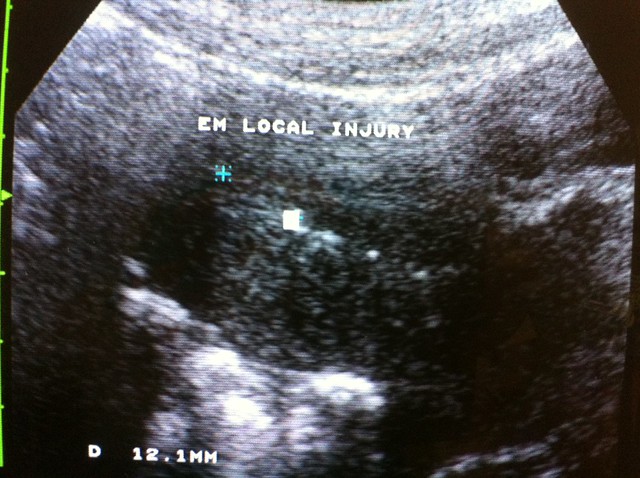子宮內膜刺激術,試管嬰兒懷孕率高達百分之一百的秘密武器! 子宮內膜刺激術,試管嬰兒懷孕率高達百分之一百,真的還是假的? 子宮內膜刺激術,"剌激"那裡? http://www.youtube.com/watch?v=lpDNuWkUtlY http://www.youtube.com/watch?v=LO11XyoQS0E 子宮內膜刺激術,試管嬰兒懷孕率高達百分之一百的秘密武器! 子宮內膜刺激術,試管嬰兒懷孕率高達百分之一百,真的還是假的? http://www.youtube.com/watch?v=BhodTTgORto http://www.flickr.com/photos/41541241@N08/7649010462/sizes/c/in/photostream/ http://www.flickr.com/photos/41541241@N08/7676012320/in/photostream http://www.youtube.com/watch?v=SqaN9k2loZw 


 http://www.flickr.com/photos/41541241@N08/7649010462/sizes/c/in/photostream/
http://www.flickr.com/photos/41541241@N08/7649010462/sizes/c/in/photostream/ 
 子宮內膜刺激術,試管嬰兒懷孕率高達百分之一百,真的還是假的? (期刊是在2011年10月份生殖生物及內分泌醫學期刊) EM子宮內膜刺激術根據國外一份研究,懷孕率高達百分之一百,真的還是假的? 這是2012年的國際醫學期刊,30個多次屢次試管嬰兒失敗的病人,6個有做子宮內膜刺激術(怎麼做?如您影片中看到的),24個沒有做中只有11人懷孕(46%),有做的6個全部懷孕,作者在論文當中提到懷孕率百分之一百(100%),這是我看過的醫學文獻,最勇敢的一篇國際權威論文。 Results Patients received endometrial biopsy protocol achieved a pregnancy rate of 100%. By contrast, only 46% of patients with similar clinical characteristics (N = 24) achieved pregnancy without the hyster oscopic biopsy-induced endometrium injury (p < 0.05). Abstract Background To test whether a site-specific hysteroscopic biopsy-induced injury in the endometrium during the controlled ovarian hyperstimulation cycle improves subsequent embryo implantation in patients with repeated implantation failure, a total of 30 patients who have had good responses to controlled ovulation stimulation but have failed to achieve pregnancy after two or more transfers of good-quality embryos were recruited in this prospective study. Methods A single, site-specific hysteroscopic biopsy-induced injury was generated on the posterior endometrium at midline 10-15 mm from the fundus during the D4-D7 period of the ongoing controlled ovarian hyperstimulation cycle in six patients. Results Patients received endometrial biopsy protocol achieved a pregnancy rate of 100%. By contrast, only 46% of patients with similar clinical characteristics (N = 24) achieved pregnancy without the hysteroscopic biopsy-induced endometrium injury (p < 0.05). Conclusions Our proof-of-concept study demonstrates that a site-specific hysteroscopic endometrium injury performed during the ongoing in vitro fertilization (IVF) cycle, instead of injuries received during
子宮內膜刺激術,試管嬰兒懷孕率高達百分之一百,真的還是假的? (期刊是在2011年10月份生殖生物及內分泌醫學期刊) EM子宮內膜刺激術根據國外一份研究,懷孕率高達百分之一百,真的還是假的? 這是2012年的國際醫學期刊,30個多次屢次試管嬰兒失敗的病人,6個有做子宮內膜刺激術(怎麼做?如您影片中看到的),24個沒有做中只有11人懷孕(46%),有做的6個全部懷孕,作者在論文當中提到懷孕率百分之一百(100%),這是我看過的醫學文獻,最勇敢的一篇國際權威論文。 Results Patients received endometrial biopsy protocol achieved a pregnancy rate of 100%. By contrast, only 46% of patients with similar clinical characteristics (N = 24) achieved pregnancy without the hyster oscopic biopsy-induced endometrium injury (p < 0.05). Abstract Background To test whether a site-specific hysteroscopic biopsy-induced injury in the endometrium during the controlled ovarian hyperstimulation cycle improves subsequent embryo implantation in patients with repeated implantation failure, a total of 30 patients who have had good responses to controlled ovulation stimulation but have failed to achieve pregnancy after two or more transfers of good-quality embryos were recruited in this prospective study. Methods A single, site-specific hysteroscopic biopsy-induced injury was generated on the posterior endometrium at midline 10-15 mm from the fundus during the D4-D7 period of the ongoing controlled ovarian hyperstimulation cycle in six patients. Results Patients received endometrial biopsy protocol achieved a pregnancy rate of 100%. By contrast, only 46% of patients with similar clinical characteristics (N = 24) achieved pregnancy without the hysteroscopic biopsy-induced endometrium injury (p < 0.05). Conclusions Our proof-of-concept study demonstrates that a site-specific hysteroscopic endometrium injury performed during the ongoing in vitro fertilization (IVF) cycle, instead of injuries received during
- 關於博元
- 聯絡博元婦產科、請加入「新」博元婦產科好孕媽咪聊天室 line 賴ID :ok930423 非常意外的 也非常抱歉, 由於Line帳號的登入登出 竟然使得博元婦產科和各位好友互動的Line帳號不見了, 只好重新建立新的帳號, ok930423
- 訂做優生寶寶PGD、PGS的未來
- 博元婦產科蔡鋒博獲頒,蹟身世界名醫錄:世界名人錄
- 博元婦產科榮獲衛生署頒最安全最佳醫院
- 把愛子生回來-母親節前喪子…婦隔年生子圓夢
- 48歲博元婦產科完成試管嬰兒3胞胎〈中天新聞報導〉 中天新聞報導:博元婦產科的48歲試管嬰兒成功3胞胎成功案例
- 53歲嬤產雙胞孫抱「小阿姨」 「上天給我最好母親節禮物」去年在婦產科醫師博元婦產科院長蔡鋒博 協助下進行人工受孕,還一次懷了三胞
- 全球首例 博元婦產科試管嬰兒新技術:世界首例!胚胎基因晶片篩檢 TVBS , 台視TTV報導 : 博元婦產科試管嬰兒新技術:世界首例!胚胎基因晶片篩檢
- TVBS 台視報導博元婦產科試管嬰兒新技術:世界首例!胚胎基因晶片篩檢
- TVBS TVBS 台視-報導 博元婦產科 胚胎著床前基因診斷 試管嬰兒第三代晶片PGD試管嬰兒終結白家近百年的漸凍人
- 自由時報. 聨合報 , 台灣時報 , 中華日報 ,報導博元婦產科試管嬰兒新技術: 全球首例 博元婦產科試管嬰兒新技術:世界首例!胚胎基因晶片篩檢
- 網站總覽
- 主治項目
- 嗨!博元婦產科我要掛號: https://docs.google.com/forms/d/e/1FAIpQLSdSHvH5pyQxE265z_9LefLpbtojJAj8MkZCL-v-_2pZIKdRyw/viewform?vc=0&c=0&w=1&flr=0&usp=mail_form_link
- 博元婦產科新line ok930423
- 不孕症要做哪一些必要的免疫不孕的檢查?IMMUNE NK
- 全世界胚胎著床前染色體快篩最新發展PGS
- 什麼時間做胚胎切片會影響胚胎著床率或存活率?PGS (email settings) - edited by 蔡鋒博
- 全世界診斷使用胚胎著床基因診斷的利器人數愈來愈多PGS
- 胚胎著床前基因診斷的世界最新技術PGD to
- 胚胎著床基因診斷人數愈來愈多PGS
- 胚胎切片染色體快篩會不會出差錯?有可能
- 什麼時間做胚胎切片會影響胚胎著床率或存活率?PGS
- 全世界胚胎著床前染色體快篩最新發展PGS
- 胚胎著床前基因診斷的世界最新技術PGD to
- 做胚胎著床前染色體快篩,並且做新鮮胚胎植入 qPCRPGS
- 如何從PGS來評估試管嬰兒的成功?ASPIRE
- 訂做健康寶寶,胚胎切片新鮮植入的時代已經來臨!PGS qPCR
- PGS接著新鮮胚胎植入子宮的好處 FRESH
- 次世代定序應用於試管嬰兒可以達到100%懷孕率嗎?ngs
- 胚胎著床前染色體快篩最新技術展pgs聖地牙哥妙恩的最新論文munne
- 胚胎著床前染色體快篩最新發展pgs
- 9 小時快篩胚胎24染色體 q-aCGH
- 如何到博元
- 想捐精卵?借精卵?
- 捐精捐卵表單(填這裡才對) 捐卵填以下的表格: https://docs.google.com/forms/d/e/1FAIpQLSfdAwt7s0M5AU05hjcH69W8kSHTqK5oCTm-DNGraBR1JhcLeA/viewform /////////////// 捐精填以下的表格: https://docs.google.com/forms/d/e/1FAIpQLScrfvY5L6GKY06I3c6Hv1BLbxlTLv_8lHv37rr0XBvM7DcQbQ/viewform
- 哪裡捐卵最快成功 ? 哪裡可以捐卵獲近十萬元 ? 哪裡捐卵最快 ? 哪裡捐卵交通最方便 ? 近火車站 ?
- 哪裡借精子最快?
- 哪裡可以捐卵獲近十萬元 ? 哪裡捐卵最快成功 ? 哪裡捐卵最快 ? 哪裡捐卵交通最方便 ? 近火車站 ?
- 借卵生子借卵要等多久?
- 免費看A片又可以賺營養費8000元
- 免費看A片又可以賺營養費8000元 捐精可以幫助別人 又可以賺營養費 用line也可捐精 @rwb8466g http://www.babymaker.com.tw/mobile/bank02_tab.php 博元婦產科捐精流程 1. 先打電話04-7260678*123預約諮詢時間 2. 抽血驗健康檢查與精神科評估,請攜帶健保卡 3. 送公文 4. 抽血驗染色體檢查 5. 第一次冷凍精子,領取營養費2000元(前金1) 6. 第二次冷凍精子,領取營養費2000元(前金2) 7
- 免費看A片又可以賺營養費8000元 捐精可以幫助別人 又可以賺營養費 用line也可捐精 @rwb8466g
- 捐卵子捐精子所需要檢查的項目所需要的時間
- 借精借卵你一定要填的四親等表格:很方便, (1)下載 (2)請印出後放大影印成A3大小,謝謝
- AMH多少才算卵巢功能不佳?
- 如何填寫四等親表格?
- 我要捐精捐卵
- 我要借精借卵
- 衛教園地
- 奇怪捏!她做完子宮鏡必自然懷孕,還連著三次!
- 到博元婦產科訂做優生寶寶流程 看圖秒懂
- 雲端計算大數據時代的試管嬰兒 看圖秒懂
- 輸卵管有沒有通? 看圖秒懂
- 到博元進行一條龍試管嬰兒流程 看圖秒懂
- 博元婦產科試管嬰兒療程流程圖
- 博元婦產科病歷影印資料申請
- 訂做優生寶寶
- 子宮內膜增加厚度十招 thin em
- 多囊性卵巢症候群做試管嬰兒打針,一天分兩次打針,跟一次打針試管嬰兒成功率 是一樣 !!!! PCO
- 腺肌症要怎麼做試管嬰兒才容易成功?柳培林打久一點!!! lupron
- 打破卵針之後要幾個小時取卵,成熟的卵子最多顆? hcg lag
- 多次試管嬰兒胚胎著床的救星 pgs
- 尋找夢幻精子的最新方法:使用界面閥型微流體晶片,找出最佳精子The construction of an interfacial valve-based microfluidic chip for thermotaxis evaluation of human sperm.
- 卵巢功能低的求子葵花寶典-動情激素 e2
- 哪些不良的生活習慣會減少試管嬰兒成功的機會?LIFE STYLE
- tsrm2014 vag VAGINISMUS "重度"陰道痙攣症使用人工生殖科技的博元婦產科臨床經驗
- 預測試管嬰兒成功的13關鍵因素 predict
- 男性不孕症的福音-無精症有檢測基因新方法 AZFc基因
- 免做羊膜穿刺 驗血檢測唐氏症
- 國外人士
- 客服信箱
- 人才招募






